- Philip Heseltine
- Turkish Cypriot
- Schiller
- portraits series 2019
- Georg Philipp Telemann
- Un Bel Di
- Cugate AG
- Stephen Hagan
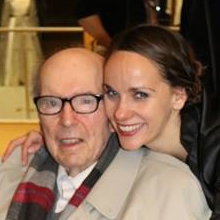 SPONSORED: Ensemble. A view from the pit - John Joubert's Jane Eyre, praised by Alice McVeigh.
SPONSORED: Ensemble. A view from the pit - John Joubert's Jane Eyre, praised by Alice McVeigh.
All sponsored features >>
 DISCUSSION: Defining Our Field - what is 'classical music' to us, why are we involved and what can we learn from our differences? Read John Dante Prevedini's essay, watch the panel discussion and make your own comments.
DISCUSSION: Defining Our Field - what is 'classical music' to us, why are we involved and what can we learn from our differences? Read John Dante Prevedini's essay, watch the panel discussion and make your own comments.
Affectionate Complicity and Tensions
GIUSEPPE PENNISI reviews
Mozart's 'Idomeneo' in Rome
On 8 November 2019, Teatro dell'Opera di Roma unveiled a new production of Idomeneo, Re di Creta by Wolfgang Amadeus Mozart. This production is the result of the collaboration between four theatres: in addition to the Roman opera house, the Teatro Real of Madrid (where it has already had great success), Copenhagen Royal Opera and the Canadian Opera Company. I was in the audience. The Roman opening night was highly awaited because the dramaturgical part of the production is signed by Robert Carsen and his usual creative team - Luis Cavalho for sets and costumes, Peter Van Praet for lighting, and Will Duke for videos. In Rome, the team was much applauded a few months ago for Gluck's Orfeo e Euridice.
Of the two versions of Mozart's opera, the production follows the one that debuted at the Teatro di Corte (now Teatro Cuvillés) in Munich on 29 January 1781, not the one that debuted a few months later in Vienna. However, the role of Idamante is entrusted to a lyrical tenor (Joel Prieto) not to a castrato as in Monaco or to a mezzo or a soprano (as it is often done in modern staging) and the dances are integrated into the action. I would like to point out that philological editions of the operas that debuted in Munich in 1781 are very rare given the small size of the baroque Court Theatre; this involved a small orchestra and a very few dancers and chorus members. I remember one in Washington in the 1970s as part of a Mozart festival.
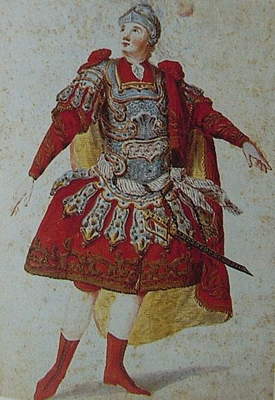
Anton Raaff in the title role of Mozart's Idomeneo
at the opera's first performance in Munich in 1781
In this review, I start from the musical part, and especially from the orchestration. Idomeneo had been practically forgotten because in the nineteenth century it had been performed a few times only in Germany and Austria, in German translation and with severe cuts. It was rediscovered by Richard Strauss in 1931 for the celebrations for the 150th anniversary of its debut. Strauss pointed out how, from the majestic and dramatic overtures in D major to the final B minor, it has the most sumptuous and dazzling orchestration of Mozart's operas. The composer himself was aware of this, as revealed by a letter by his widow. It is an opera seria that, while respecting the canons of the category, looks to the future, as demonstrated, for example, by the dramatic force of the recitatives, almost always accompanied by the orchestra. It is, then, an opera for important conductors and orchestras. In recent decades, I have been lucky enough to hear it directed by Peter Maag and Chung Myung-whun in Rome - Teatro dell'Opera and Santa Cecilia Academy, Daniel Harding in Aix-en Provence, Jeffrey Tate at La Fenice and other conductors of international reputation. In a small restaurant in Aix, before the performance, Harding suggested I listen with my eyes closed: the staging betrayed the orchestra.
In Rome, the success of this production is due to Michele Mariotti and the orchestra more than to the creative team. I had already listened to Mariotti conducting Idomeneo in Bologna nine years ago, but different sounds came out, not only because the orchestra was different from that of the Rome Opera House but also because, for this production, Mariotti dug more than then into the admirable weaving between strings and winds, and into the counterpoint almost hidden in the score. The strength with which orchestral timbres are shown, the passages modulating from major to minor, the emphasis on melodic words and intervals, and the value placed on expressive recitatives (not only on 'numbers') show that Mariotti and the orchestra were the real protagonists of the evening. I hope he will be invited back to Rome. And often.
Let us get to the voices. Idomeneo is sung by Charles Workman, who I had listened to in this role about fifteen years ago when the Theatre of the Muses of Ancona was reopened, and who for years was seen and heard at the Rossini Opera Festival in Pesaro. The fifty-five-year-old baritenore from Arkansas still has the vocality of when he was a thirty-year-old; his Mozart style has not been affected by the fact that in recent years he has sung Berg, Korngold and Adès.
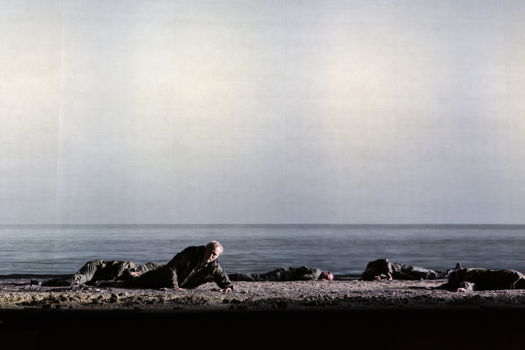
Charles Workman in the title role of Mozart's 'Idomeneo, re di Creta' at Teatro dell'Opera di Roma. Photo © 2019 Yasuko Kageyama
The Spanish lyric tenor Joel Prieto (Idamante), launched by the 2008 Operalia Prize, responded well to the challenge: he is a Mozartian tenor of agility, with great care in flats and diction. The role has, of course, greater coloratura if sung by a countertenor or by a mezzo or a soprano.
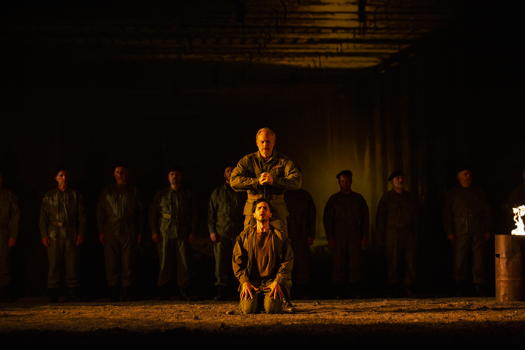
Joel Prieto as Idamante and Charles Workman in the title role of Mozart's 'Idomeneo, re di Creta' at Teatro dell'Opera di Roma. Photo © 2019 Yasuko Kageyama
Rosa Feola (Ilia) shows great agility, but above all a beautiful timbre and a lot of melody. Ilia is perhaps the character most distant from the tradition of opera seria and is close to tragédie lyrique. Miah Persson is an Elettra. On the other hand, she is clearly an opera seria character, especially in the recitative and air in C minor, highly dramatic, D'Oreste, D'Ajace.
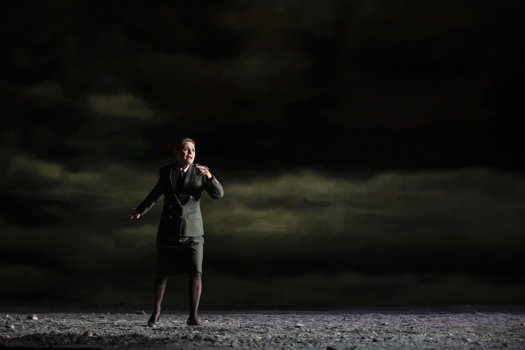
Miah Persson as Elettra in Mozart's 'Idomeneo, re di Creta' at Teatro dell'Opera di Roma. Photo © 2019 Yasuko Kageyama
The four protagonists are perfect in the quartet Andrò ramingo, developed very well even scenically. Unfortunately, the Roman audience, although ready to peel their hands at every vocalizing, remained almost indifferent to this moment of rare dramatic intensity, and of rare beauty too. There were good minor characters: Alessandro Luciano (Arbace), Oliver Johnston (Great Priest) and Andrii Ganchuck (a voice). Bravo, as always, to the chorus led by Roberto Gabbiani; of course, it is numerous, whereas in Munich in 1781 it will have been composed of no more than eight singers.
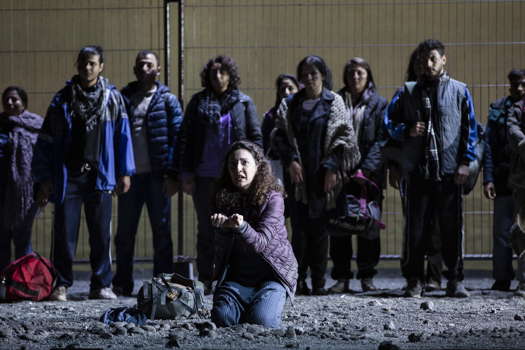
Rosa Feola as Ilia with members of the chorus in Mozart's 'Idomeneo, re di Creta' at Teatro dell'Opera di Roma. Photo © 2019 Yasuko Kageyama
The staging modernizes the plot to the present day: war in the Middle East, refugees and migrants, sea storms - indeed tsunamis, and bombed cities. Carsen and his colleagues are excellent professionals and know how to move singers and the masses. There is everything, and more, to please the audience (which on 8 November seemed enthusiastic). It is a bit, as the French would say, pour épater les bourgeois, however.
Two essential aspects are missing: the relationship between man and God; and the relationship between father and son. The author of the libretto, Giambattista Varesco, chaplain of the Court in Salzburg, was a good traditionalist Roman Catholic of the province, while Wolfgang Amadeus, in that of Munich, was a young man of the Roman Catholic Enlightenment who was entering one of those lodges of Catholic-Masons so well described by Lidia Bramani in her 2005 book Mozart massone e rivoluzionario. This explains the serene tolerance that permeates the characters of Ilia and Idamante, and the contrast with the tormented Idomeneo and Elettra.
The relationship between father and son is read by Carsen as a trivial generational clash - as Peter Sellars did in the production seen this summer in Salzburg. Just read the epistolary between Wolfgang Amadeus (in Munich) and his father Leopold (in Salzburg where, by the way, he intermediated with Varesco) to realize that it was a mixture of affectionate complicity and tensions. As between the two protagonists of the opera. The music says it more eloquently than the stage action.
Copyright © 13 November 2019
Giuseppe Pennisi,
Rome, Italy



